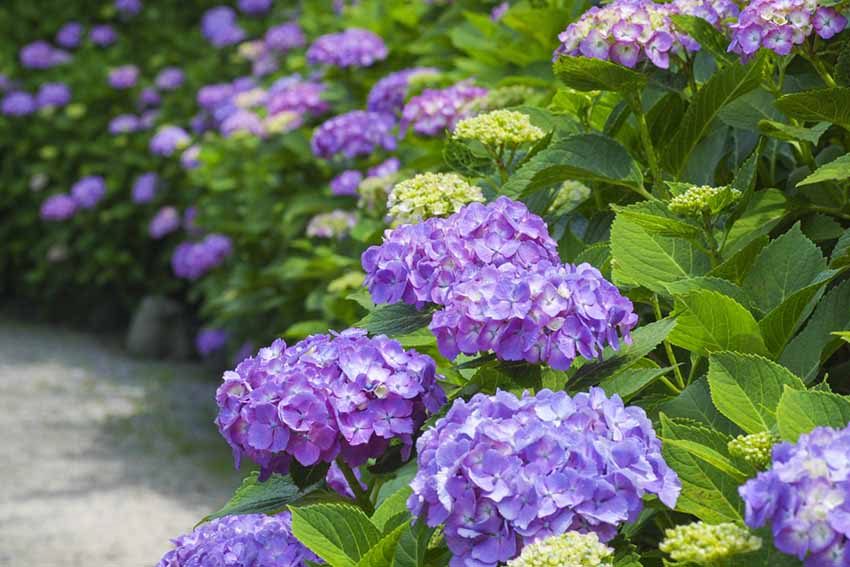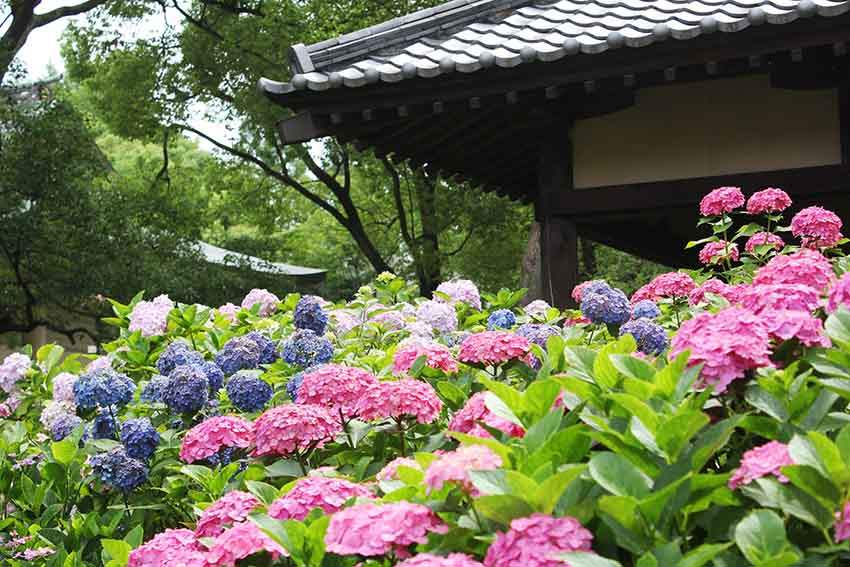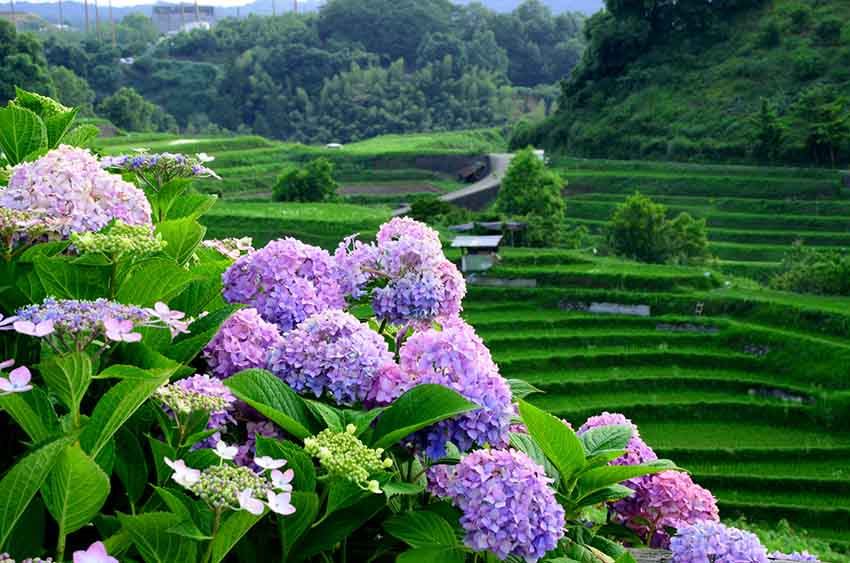June and July are Japan’s rainy season, which is known as tsuyu (梅雨).
It is damp and humid and not very nice, but there are also some sights that can only be enjoyed during this time of year.
I’m going to be introducing just one such sight—ajisai (アジサイ/紫陽花/hydrangeas)

Ajisai are native to Japan; they flower between June and July.
The one shown in the photo is a Japanese gaku-ajisai with small flowers encircled by larger flowers (gaku).
Ones with big, round flowers (gaku) were bred selectively in Europe, and are known as seiyo-ajisai.

It is said that if the soil is acidic, the flowers are closer to blue, and if it is alkaline, they are closer to red.
Another thing that is interesting is that after they bloom, the flowers change color as time goes on.

There are also various botanical gardens and ajisai gardens that are great for ajisai-spotting.
Lots of them also offer beautiful views of terraced paddy fields (like the ones in the photo), or are next to waterfalls and so forth.
They all have their own different charms, so make sure to check if there are any near places you are visiting.
Ajisai, a herald of the coming of summer, has a deep-rooted place in the hearts of the Japanese.
Why not try experiencing the beauty of ajisai—its changing colors; the gentle patter of the rain against it—together with some wonderfully Japanese landscapes?
It is damp and humid and not very nice, but there are also some sights that can only be enjoyed during this time of year.
I’m going to be introducing just one such sight—ajisai (アジサイ/紫陽花/hydrangeas)

If you are here around June, then do not miss this flower
I am sure there are lots of people planning trips to Japan around June or July.
The only thing is, that time of year is Japan’s rainy season: tsuyu.
It’s an inconvenient time of year for walking around outside, but there are also some sightseeing spots that are in fact best seen during the rainy season.
One of the best examples of this is ajisai, or hydrangeas.

The only thing is, that time of year is Japan’s rainy season: tsuyu.
It’s an inconvenient time of year for walking around outside, but there are also some sightseeing spots that are in fact best seen during the rainy season.
One of the best examples of this is ajisai, or hydrangeas.

Ajisai are native to Japan; they flower between June and July.
The one shown in the photo is a Japanese gaku-ajisai with small flowers encircled by larger flowers (gaku).
Ones with big, round flowers (gaku) were bred selectively in Europe, and are known as seiyo-ajisai.

Ajisai is blue, white, purple or red color
Ajisai flowers come in colors such as blue, white, purple, and red.It is said that if the soil is acidic, the flowers are closer to blue, and if it is alkaline, they are closer to red.
Another thing that is interesting is that after they bloom, the flowers change color as time goes on.

You should visit temples to enjoy Ajisai
Ajisai can also be seen out and about in the streets, but there are some places where you can see lots of them all together.
They are especially common in the grounds of temples and shrines, and there are temples across the country, known as “ajisai temples”, that are famous for their flowers.
Famous ones include Takahata Fudoson in Tokyo, Meigetsu-in and Joju-in in Kamakura, Mimuroto-ji in Kyoto, and Senko-ji in Fukuoka.

Famous ones include Takahata Fudoson in Tokyo, Meigetsu-in and Joju-in in Kamakura, Mimuroto-ji in Kyoto, and Senko-ji in Fukuoka.

There are also various botanical gardens and ajisai gardens that are great for ajisai-spotting.
Lots of them also offer beautiful views of terraced paddy fields (like the ones in the photo), or are next to waterfalls and so forth.
They all have their own different charms, so make sure to check if there are any near places you are visiting.
Ajisai, a herald of the coming of summer, has a deep-rooted place in the hearts of the Japanese.
Why not try experiencing the beauty of ajisai—its changing colors; the gentle patter of the rain against it—together with some wonderfully Japanese landscapes?

Comments